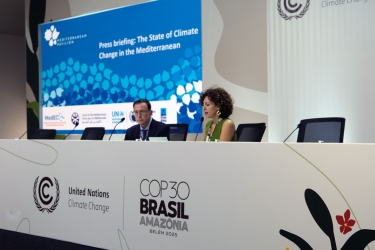New study analyses how forests and wood use can help meet climate goals

Forests and forestry play a key role in policy targets to achieve climate neutrality. In a comprehensive new European Forest Institute study, a multidisciplinary team of 12 authors from 7 countries have analysed how much forests and wood use can contribute to climate change mitigation, and how that contribution can be maximised.
They conclude that European forests and wood products can provide a significant contribution to achieve climate neutrality by 2050, but their contribution is finite and cannot compensate for delayed actions in other sectors.
Currently, forests and wood products remove approximately 10% of the European Union’s total greenhouse gas emissions. Forests and wood products are part of the Land Use, Land-Use Change, and Forestry (LULUCF) sector, which in the EU removes currently 256 MtCO2eq/year. According to the European Commission’s proposed policy targets, the sector needs to remove in addition approximately 50 MtCO2eq/year by 2030 and 170 MtCO2eq/year by 2050. Based on a review of the scientific literature, the new From Science to Policy study shows that the combined additional mitigation potential from avoided deforestation, afforestation/reforestation, shifts in wood use, and cascading is up to 72 MtCO2eq/year by 2050 in the EU. This could increase to 125 MtCO2eq/year when combined with forest conservation activities, 138 MtCO2eq/year when combined with other active forest management, or 143 MtCO2eq /year when combined with decreasing forest harvest.
However, the ability of forests to remove CO2 is affected by climate change because it can both increase and decrease carbon storage in forests and wood products. Moreover, limited information is currently available on the related costs and feasibility of realising the forest-based mitigation potential, and a high degree of uncertainty applies.
The study explores how the contribution by forest-based mitigation actions can be maximised, recommending that a holistic approach is adopted. Multiple forest-based mitigation activities should be combined to maximise the effect and foster synergies, interactions, co-benefits and regional applicability.
Lead author and Principal Scientist at EFI Hans Verkerk said: “The technology, capacity and strategies that are needed to implement forest-based mitigation measures at large scale are readily available and have already been used for decades. We urgently need to start implementing them if we want to meet the internationally agreed climate targets.” EFI’s Assistant Director and editor of the From Science to Policy series, Helga Pülzl added: “This cutting-edge study crucially supports European decision-maker to base their climate change decisions on the latest scientific evidence.”
More information
The study is published on 20 September 2022 and is freely available to download.
Download the associated policy brief: How can forests and wood use help meet climate goals?
Recommended citation: Verkerk, P.J., Delacote, P., Hurmekoski, E., Kunttu, J., Matthews, R., Mäkipää, R., Mosley, F., Perugini, L., Reyer, C. P. O., Roe, S., Trømborg, E. 2022. Forest-based climate change mitigation and adaptation in Europe. From Science to Policy 14. European Forest Institute https://doi.org/10.36333/fs14
This work and publication has been financed by EFI’s Multi-Donor Trust Fund for policy support, which is supported by the governments of Austria, Czech Republic, Finland, Germany, Ireland, Italy, Lithuania, Norway, Slovenia, Spain and Sweden.
Image: Massimo Ravera / Moments via Getty Images


